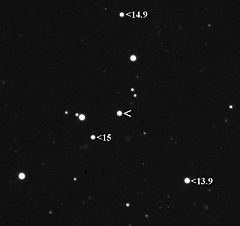Discovered by J. Palisa Minor planet category Main belt (Hilda) Aphelion 4.5341 AU (678.29 Gm) Orbital period 2,891 days Asteroid group Asteroid belt | Discovery date 2 November 1875 Observation arc 121.05 yr (44215 d) Perihelion 3.4225 AU (512.00 Gm) Discovered 2 November 1875 Orbits Sun | |
 | ||
Similar Asteroid belt, Solar System, 142 Polana, Sun, 135 Hertha | ||
153 Hilda is a large asteroid in the outer main belt, with a diameter of 170 km. Because it is composed of primitive carbonaceous materials, it has a very dark surface. It was discovered by Johann Palisa on November 2, 1875, from the Austrian Naval Observatory at Pula. The name was chosen by the astronomer Theodor von Oppolzer, who named it after one of his daughters.
Contents
Orbit and family
Hilda gives its name to an asteroid group called the Hilda family (or Hildas for short). It is not a true asteroid family, since the members are not physically related, but rather share similar orbital elements. The Hildas are locked in a 2:3 orbital resonance with Jupiter; since Jupiter takes 11.9 years to orbit the Sun while Hilda takes 7.9 years, Jupiter orbits the Sun twice for every 3 orbits that Hilda completes. There are over 1,100 other objects known to be in a 2:3 resonance with Jupiter.
Observations
Hilda was observed to occult a star on December 31, 2002, from Japan. It has a very low-amplitude light curve indicating a spherical body or a non-varying albedo.
